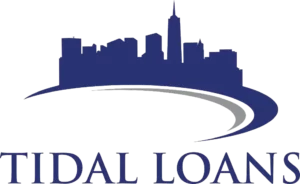Relentless urban development has brought about a surge of urban living trends and innovations that aim to address the challenges that come with it. Integrating sustainability and smart technology emerges as a transformative force in this landscape — reshaping how people inhabit and interact with urban spaces.
As the concrete jungle expands, the focus has shifted towards sustainable smart homes. This paradigm caters to modern living and aligns with a conscientious environmental approach. These residences, equipped with a spectrum of cutting-edge technologies, embody a new era of urban living that embraces efficiency, conservation, and intelligence.
Integrating sustainability and smart technology in urban living has also become a paramount consideration for those identifying the best real estate markets.
This article will dig deeper into the role of technology in redefining urban living and how technological innovations led to the rise of sustainable smart homes. It will also how the integration of technology and sustainable smart homes impacts urban communities.
Technological Advancements That Shape Urban Living
Technology stimulates transformation in urban living as it orchestrates a symphony of advancements that elevate cities into intelligent and sustainable hubs. It serves as the backbone that supports smart solutions to enhance efficiency, sustainability, and overall quality of life in urban environments.
That’s why cutting-edge technologies are at the forefront of the realm of sustainable smart homes. Internet of Things (IoT) applications stand out as a prime example as it enables seamless communication between devices. This interconnectedness allows for real-time data exchange, empowering residents to monitor and control various aspects of their homes remotely.
Artificial Intelligence (AI) takes the concept of sustainability a step further by enabling energy optimization on a sophisticated level. It does this by analyzing data from various sensors and devices to learn and adapt to residents’ preferences and usage patterns. This leads to dynamic adjustments in energy consumption and ensures that resources are utilized optimally without sacrificing comfort or convenience.
Advanced home monitoring and control systems add another layer of sophistication to urban living. Like the IoT, these systems provide real-time insights into energy usage, environmental conditions, and security. This innovation also promotes a sense of control over residents’ environmental impact as it allows them to actively manage and customize their living spaces through intuitive interfaces.
These technological advancements are not mere conveniences; they are powerful tools that empower individuals to embrace a more sustainable lifestyle. Integrating these technologies into individual homes becomes a defining characteristic of a forward-thinking urban dweller.
Understanding and leveraging these innovations also becomes crucial for those looking to navigate the dynamic landscape of real estate investment, especially those looking to build their private equity real estate funds.
An Overview of Sustainable Smart Homes
Sustainable smart homes represent a paradigm shift in contemporary urban living following the integration of technological innovations. The core of this revolutionary approach to living is how it leverages advanced technologies to optimize resource consumption, minimize environmental impact, and enhance the overall efficiency of daily life.
For instance, sustainable smart homes are known to use energy-efficient appliances that maximize energy consumption and reduce the overall carbon footprint of the household. From refrigerators to lighting systems, these appliances are designed both for convenience and with a meticulous focus on resource conservation.
The integration of smart home automation takes this efficiency a step further. That’s because residents can control and monitor various aspects of their homes remotely, ensuring that energy is used sensibly and only when necessary. The seamless coordination of home devices creates an ecosystem where efficiency becomes a dynamic aspect of daily living.
The adoption of renewable energy sources is also a defining feature of a sustainable smart home. Solar panels, in particular, have gained prominence as they harness the power of the sun to generate clean, renewable energy. Using this green technology also reduces reliance on traditional power grids and transforms homes into active contributors to sustainable energy practices.
Complementing these advancements is the incorporation of eco-friendly construction materials. Whether it’s using sustainable wood or opting for recycled materials, the utilization of such materials minimizes the environmental impact of the building process while creating homes that are both durable and eco-sensitive.
The seamless convergence of these components sets the stage for a new standard in urban living — one where innovation and sustainability work together to create homes that meet the needs of the present and pave the way for a more sustainable future.
Impact of Sustainable Smart Home Solutions on Urban Communities
The integration of sustainable smart home solutions goes beyond individual residences as it also influences entire urban communities in profound ways. Community-wide sustainability initiatives, for instance, are a notable effect of this innovation.
This positive consequence inspires residents to rally around shared environmental goals, collaborating to implement broader eco-friendly measures. Such a collaborative spirit results in shared resources such as community gardens, recycling programs, and renewable energy projects that further reduce the collective carbon footprint.
This communal mindset worms its way into urban planning for smart and sustainable cities. City planners are increasingly recognizing the importance of integrating sustainable smart home technologies into broader urban development strategies. That means the synergy of sustainable smart homes with urban planning is building urban landscapes that prioritize efficiency, resilience, and a harmonious relationship with the surrounding environment.
The benefits of adopting sustainable smart solutions extend into the social fabric. Beyond the obvious environmental advantages, social bonds within communities are strengthened as they share a commitment to sustainability and foster a sense of shared purpose and cooperation.
The economic benefits are also manifold, ranging from reduced utility costs due to energy-efficient practices to increased property values as sustainable features become sought-after amenities.
Conclusion
The rise of sustainable smart homes marks a pivotal moment in redefining urban living. These homes — intertwining technology and sustainability — offer a transformative blueprint for a more efficient, environmentally conscious, and interconnected urban lifestyle. As we navigate the path towards a more interconnected and sustainable urban landscape, there is a pressing need for further integration and adoption of these practices.
For those aspiring to invest in sustainable smart homes, consider exploring flexible financing options to kickstart your journey. Tidal Loan offers tailored solutions that can empower you to become a successful real estate investor and contribute to the ongoing evolution of urban living.


